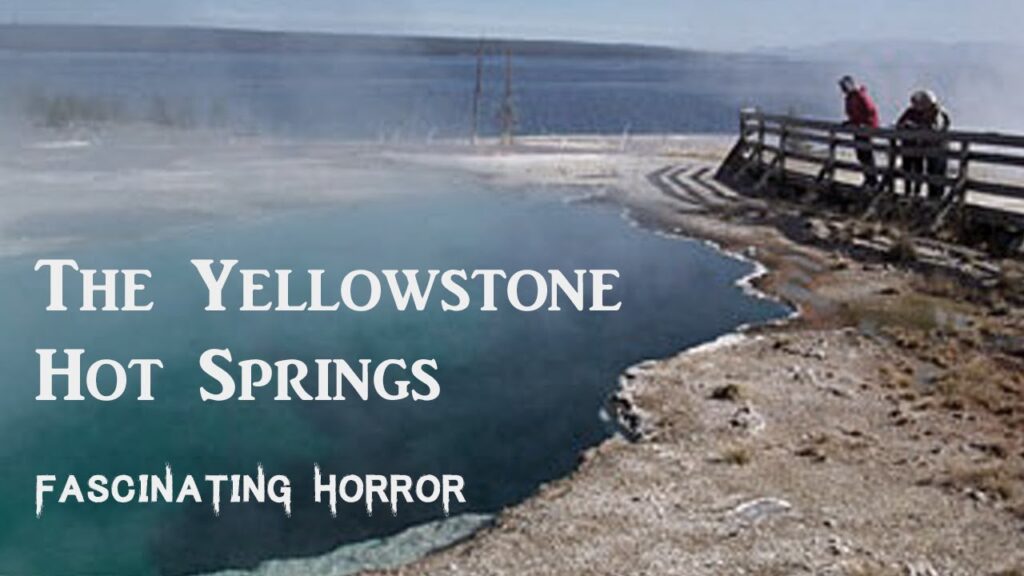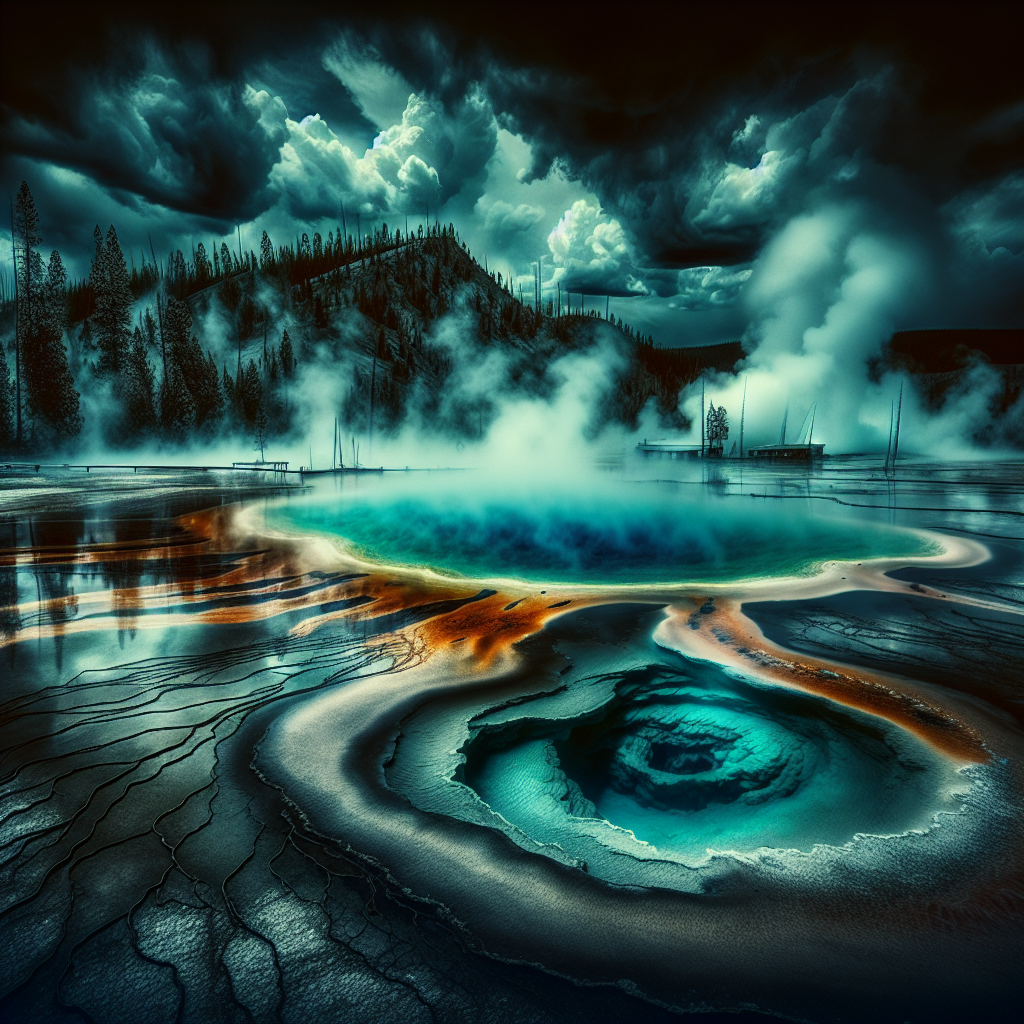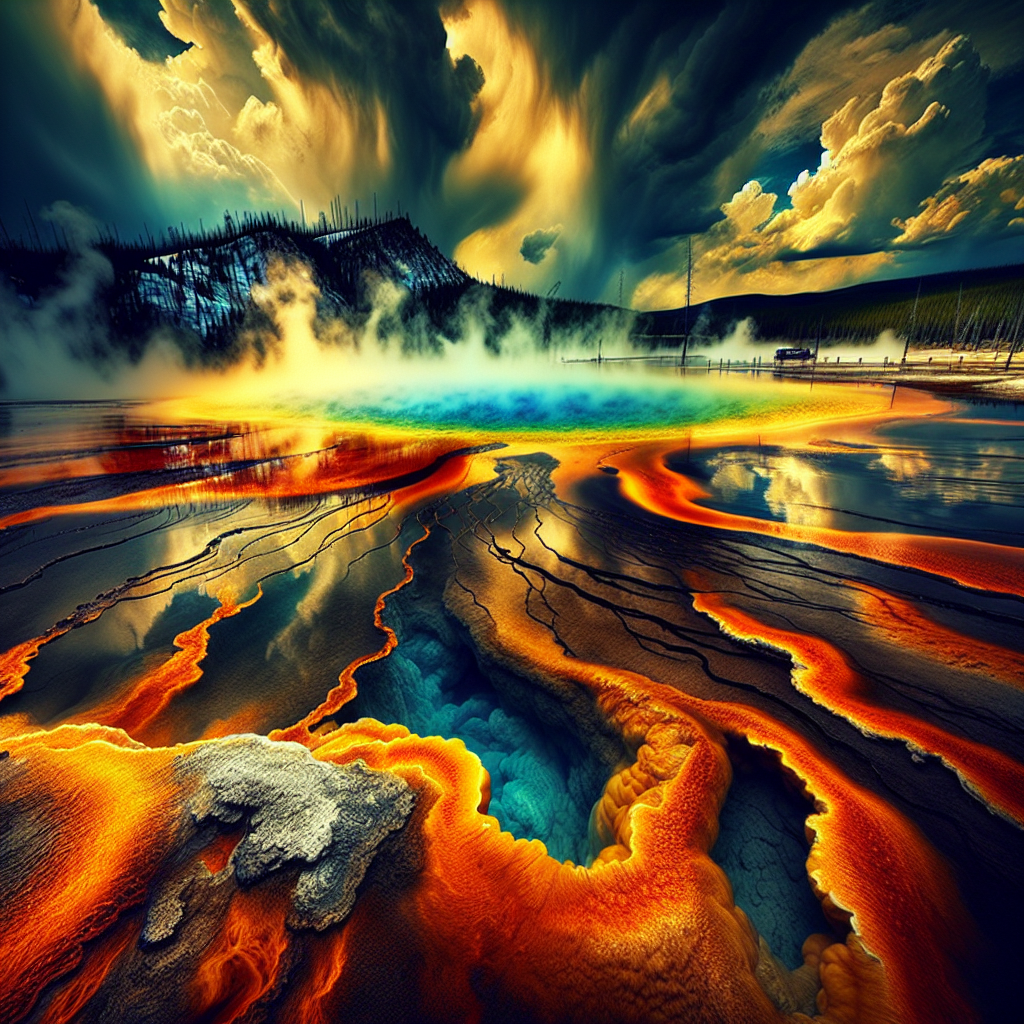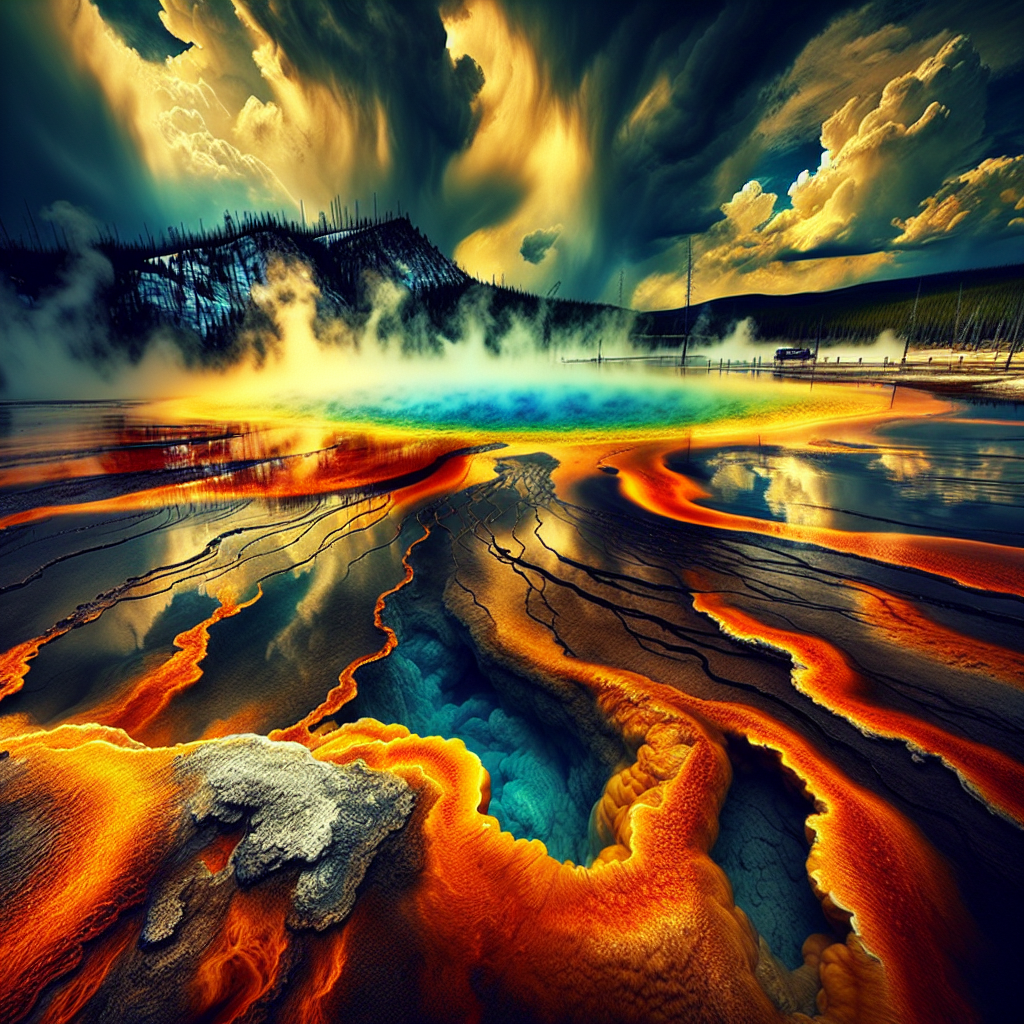In the breathtaking landscape of Yellowstone National Park, lies a hidden danger that has both captivated and horrified visitors for years. The thermal springs, known for their unique geological features, have claimed numerous lives and caused accidents that range from falling into scalding hot water to attempting risky pet rescues. Despite these dangers, Yellowstone remains a pristine wilderness that prioritizes education and caution rather than installing barriers and signage. In this short documentary by Fascinating Horror, you̵7;ll delve into the fascinating history of Yellowstone, explore the harrowing incidents that have occurred in the park’s thermal areas, and discover the delicate balance between preserving nature and ensuring visitor safety. Prepare yourself for a captivating and cautionary journey into the world of the Yellowstone Hot Springs.
From the moment Yellowstone National Park was established on March 1, 1872, it has been an enchanting realm of volcanic activity, wildlife, and natural wonders. Within its boundaries, bison, elk, wolves, and bears roam freely, living amidst geological marvels such as fumaroles, geysers, and bubbling mud pits. However, the park’s thermal springs, with their boiling waters and treacherous depths, have claimed lives throughout its history. From the tragic story of Pastor Gilbert Eakins in 1926 to the harrowing incident involving David Kirwan and his attempt to rescue his friend’s dog in 1981, each tale stands as a chilling reminder of the dangers that lie beneath Yellowstone’s serene surface. Join Fascinating Horror on this short documentary journey to gain a deeper understanding of Yellowstone’s dark side and the delicate balance between adventure and caution within this untamed wilderness.
The Geological Wonders of Yellowstone
Yellowstone National Park, established in 1872, holds a special place in the hearts of nature lovers and adventurers alike. Located primarily in the state of Wyoming, with parts stretching into Montana and Idaho, Yellowstone is a haven for unique geological wonders and breathtaking landscapes. From its formation to the preservation efforts in place today, let’s explore the remarkable features that make Yellowstone a must-see destination.
The Formation of Yellowstone
Yellowstone’s geological history dates back millions of years. The park sits atop one of the world’s largest active volcanic systems, known as the Yellowstone hotspot. This hotspot, fueled by a mantle plume, has resulted in the formation of a supervolcano beneath the park. The most recent volcanic eruption occurred approximately 640,000 years ago, leaving behind the iconic Yellowstone Caldera, which spans over 30 miles in diameter.
Unique Features of Yellowstone
Yellowstone is renowned for its diverse landscape and awe-inspiring features. From towering mountains and deep canyons to vast meadows and pristine lakes, the park offers a visual feast for visitors. One of the most distinctive features of Yellowstone is its thermal springs, which are a result of the volcanic activity beneath the surface. These thermal features create a vibrant display of colors, with some resembling alien landscapes. The park is also home to numerous geysers, including the famous Old Faithful, which erupts like clockwork every 90 minutes or so.
The Beauty of the Thermal Springs
The thermal springs in Yellowstone are truly a sight to behold. These unique natural wonders are formed by groundwater heated by the volcano’s magma, which then rises to the surface. The water dissolves minerals along its journey, resulting in the distinct colors often seen in thermal pools. From deep blues and vivid greens to rusty oranges and vibrant yellows, the kaleidoscope of colors is a testament to the geological processes at work. Some of the most notable thermal springs in Yellowstone include the Grand Prismatic Spring, with its striking rainbow-like hues, and the Morning Glory Pool, featuring a vivid blue center surrounded by vibrant orange edges.
The Yellowstone Hot Springs
When exploring Yellowstone, one cannot miss the mesmerizing hot springs that dot the park. These hydrothermal features come in various forms and provide an incredible showcase of nature’s power.
Types of Hot Springs in Yellowstone
There are four main types of hot springs found in Yellowstone: hot pools, fumaroles, geysers, and mud pots. Hot pools are calm bodies of water with temperatures ranging from warm to scalding, depending on their proximity to the heat source. Fumaroles, on the other hand, release steam and gases into the air without much water present. Geysers, such as the famous Old Faithful, are explosive hot springs that intermittently erupt, shooting water and steam into the air. Lastly, mud pots are acidic hot springs that contain a mixture of water and clay, creating a boiling, muddy concoction.
Geological Processes behind the Hot Springs
The formation of hot springs in Yellowstone is a result of several geological processes. The primary factor is the heat provided by the underground magma chamber, which warms the groundwater. As the water becomes heated, it rises to the surface through fractures in the rock, creating the various types of hot springs. Along its journey, the water picks up minerals and chemicals from the surrounding rocks, giving the pools their distinct colors and unique characteristics. The intense heat and the abundance of dissolved minerals also create an ideal environment for thermophilic microorganisms, which thrive in Yellowstone’s thermal features.
Notable Hot Springs in Yellowstone
Yellowstone boasts numerous hot springs, each with its own charm and beauty. The Grand Prismatic Spring, located in the Midway Geyser Basin, is the largest hot spring in the park and arguably the most visually stunning. Its vibrant colors, ranging from deep blues in the center to fiery reds and golden yellows along the edges, create a mesmerizing effect. Another notable hot spring is the Morning Glory Pool, named after the flower it resembles. While its intense blue color has captivated visitors for decades, human interference has caused debris to block the pool’s vent, reducing its temperature and altering its appearance.

The Deadly Side of the Hot Springs
As breathtaking as Yellowstone’s hot springs may be, they also possess a dangerous side that should not be overlooked. Over the years, numerous accidents and fatalities have occurred in these thermal areas, leading to the implementation of precautions and safety measures.
Accidents and Deaths in the Hot Springs
Tragically, accidents involving hot springs have claimed many lives within Yellowstone National Park. Throughout history, incidents of people falling into boiling hot water or being scalded by geothermal features have been documented. Injuries sustained in these accidents are often severe, resulting in burns that can be fatal.
Causes of Accidents
Accidents in the hot springs are often a result of human error or ignorance. Visitors may underestimate the temperature of the water or venture off designated boardwalks, putting themselves at risk. In some cases, individuals may attempt to touch or collect samples from the thermal features, unaware of the scalding temperatures and toxic chemicals present. Additionally, pets are another common cause of accidents, as their owners may impulsively jump in to rescue them without considering the risks involved.
Falling into Boiling Hot Water
Perhaps one of the most harrowing experiences is falling into boiling hot water within the park. The water temperature in these pools can exceed 200°F (93°C), causing severe burns on contact. Unfortunately, the intense pain and instinctual reaction to escape can lead to further injuries or even death. Past incidents have demonstrated the swift and devastating consequences of falling into these thermal features, highlighting the need for caution and awareness.
Rescuing Pets and the Consequences
While pets are not allowed in many areas of Yellowstone National Park, incidents involving animals and the hot springs still occur. Owners who disregard the rules or underestimate the risks may find themselves faced with a pet in distress. In the attempt to rescue their beloved companions, individuals inadvertently put themselves in harm’s way. The consequences can be catastrophic, resulting in severe burns and, in some cases, loss of life.
The Challenges Faced by Employees and Visitors
The dangers of Yellowstone’s thermal areas extend beyond visitors. Even employees tasked with caring for the park’s natural wonders face risks and challenges in these geologically active zones.
Burns and Injuries in the Thermal Areas
Each year, young college students are employed in summer jobs throughout Yellowstone National Park. These individuals, known as seasonal employees, contribute to various aspects of park operations, ensuring visitors have an enjoyable experience. However, even these dedicated individuals are not immune to the hazards present in the thermal areas. Burns and injuries can occur while performing routine tasks or during recreational activities, emphasizing the need for caution and adherence to safety guidelines.

Education and Caution in Yellowstone
While accidents in Yellowstone’s thermal areas are undoubtedly tragic, the park’s ethos prioritizes education and caution over the implementation of barriers and excessive signage.
The Wilderness Ethos of Yellowstone
Yellowstone National Park was established as a wilderness, a place where the raw beauty of nature can be observed and admired. Central to this ethos is the belief that nature should be experienced in its unadulterated form, allowing visitors to witness its power and unpredictability. This approach may seem at odds with the push for safety barriers and extensive signage, but it is a key aspect of preserving the untamed essence of Yellowstone.
Prioritizing Education over Barriers and Signage
Rather than relying solely on physical barriers and warning signs, Yellowstone National Park focuses on education as a means of keeping visitors safe. Park rangers and staff provide information about the dangers of the thermal features, highlighting the risks involved and offering guidelines for responsible exploration. By empowering visitors with knowledge, Yellowstone aims to create a culture of caution and respect for the natural environment. While accidents may still occur, this emphasis on education helps reduce the number of incidents and encourages responsible behavior.
The Significance of Yellowstone National Park
Yellowstone’s status as the first National Park in the United States speaks to its enduring value and importance. Beyond its unique geological features and scenic beauty, the park plays a crucial role in preserving the natural environment and promoting conservation efforts.
The First National Park in the United States
In 1872, Yellowstone National Park was established as the first national park in the United States. This landmark designation set a precedent for the preservation and protection of natural landscapes across the country. Yellowstone’s status as a national park paved the way for the establishment of many other protected areas, ensuring the conservation of valuable ecosystems for generations to come.
Preserving the Unique Landscape
Yellowstone’s geological wonders and diverse ecosystems are irreplaceable. By designating the park as a protected area, efforts are made to maintain the park’s unique landscape in its natural state. This preservation extends beyond the visible features to include the delicate balance of flora, fauna, and geological processes that sustain the park’s ecosystem.
Conservation Efforts in Yellowstone
Yellowstone continues to be at the forefront of conservation efforts. The National Park Service, in collaboration with various organizations and agencies, works tirelessly to preserve the park’s natural resources and protect its vulnerable species. Through initiatives focused on wildlife management, habitat restoration, and scientific research, Yellowstone remains a shining example of successful conservation and environmental stewardship.
In conclusion, Yellowstone National Park stands as a testament to the raw beauty and geological wonders that exist within our world. From its formation as the first national park in the United States to the unique features of its thermal springs, Yellowstone captivates and challenges visitors with its unparalleled landscapes. While accidents and tragedies have occurred within the park’s thermal areas, education and caution remain the focal points of safety measures, allowing visitors to experience Yellowstone’s wilderness responsibly. With conservation efforts in place, Yellowstone continues to inspire and protect the precious natural heritage it holds.
“On the 1st of March, 1872, Yellowstone became the first National Park in the United States of America. If you enjoy learning about fascinating horror stories like this, I want to take a moment to express my gratitude to all my Patreon patrons who make this channel possible. Your support means everything.
Connect with us on social media:
► Twitter: /truehorrortales
► TikTok: /fascinatinghorror
If you have any suggestions or ideas, feel free to reach out to us at hello@fascinatinghorror.co.uk.
Now, let’s dive into the chapters of this short documentary.
MUSIC:
► “Glass Pond” by Public Memory
► “Dolphin-esque” by Godmode
Join us as we explore the captivating history of the Yellowstone Hot Springs in this thought-provoking and spine-chilling documentary. Get ready for an intriguing journey into true stories of horror.”

